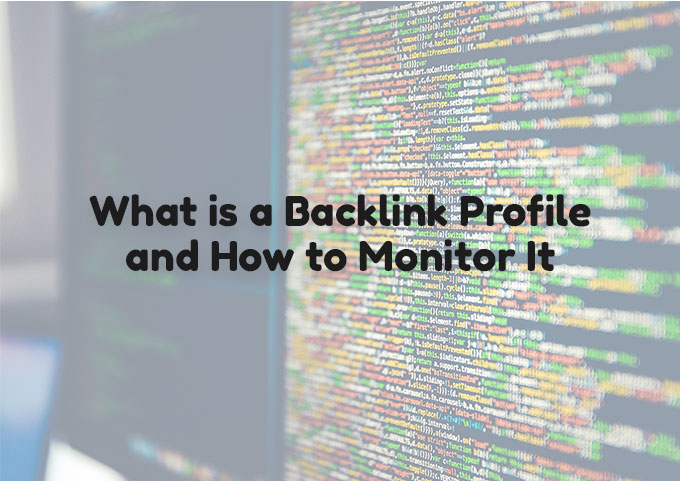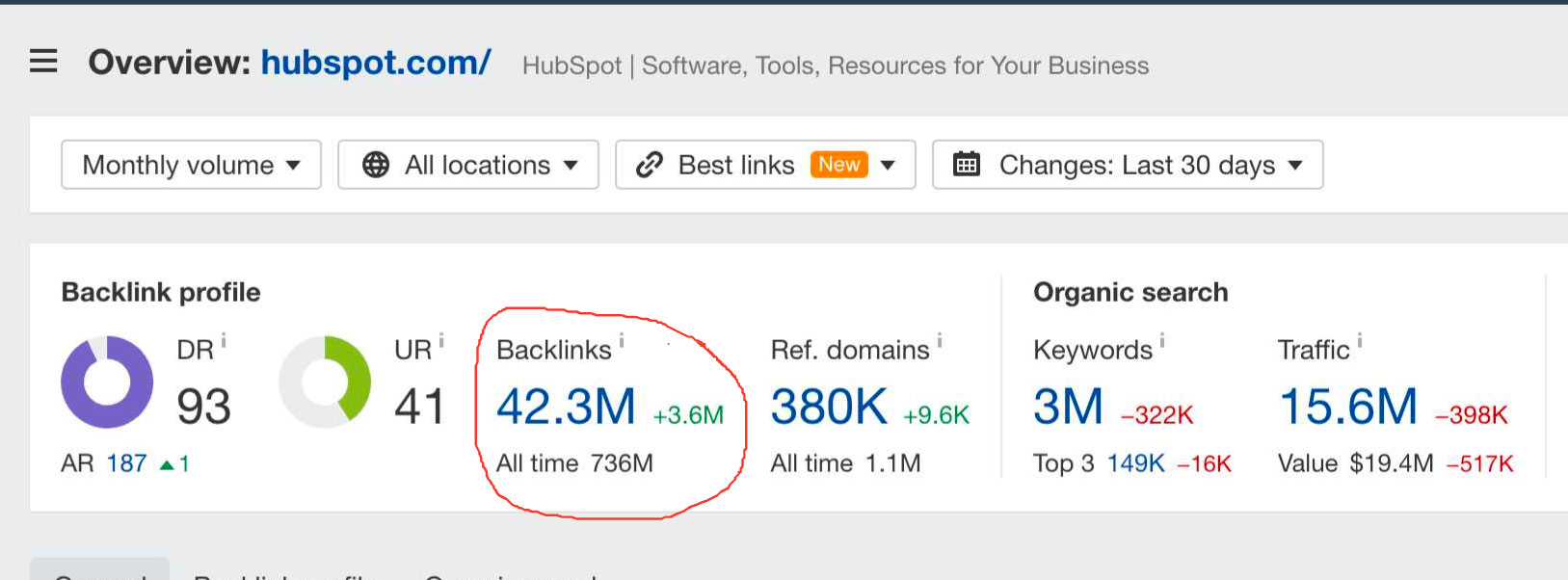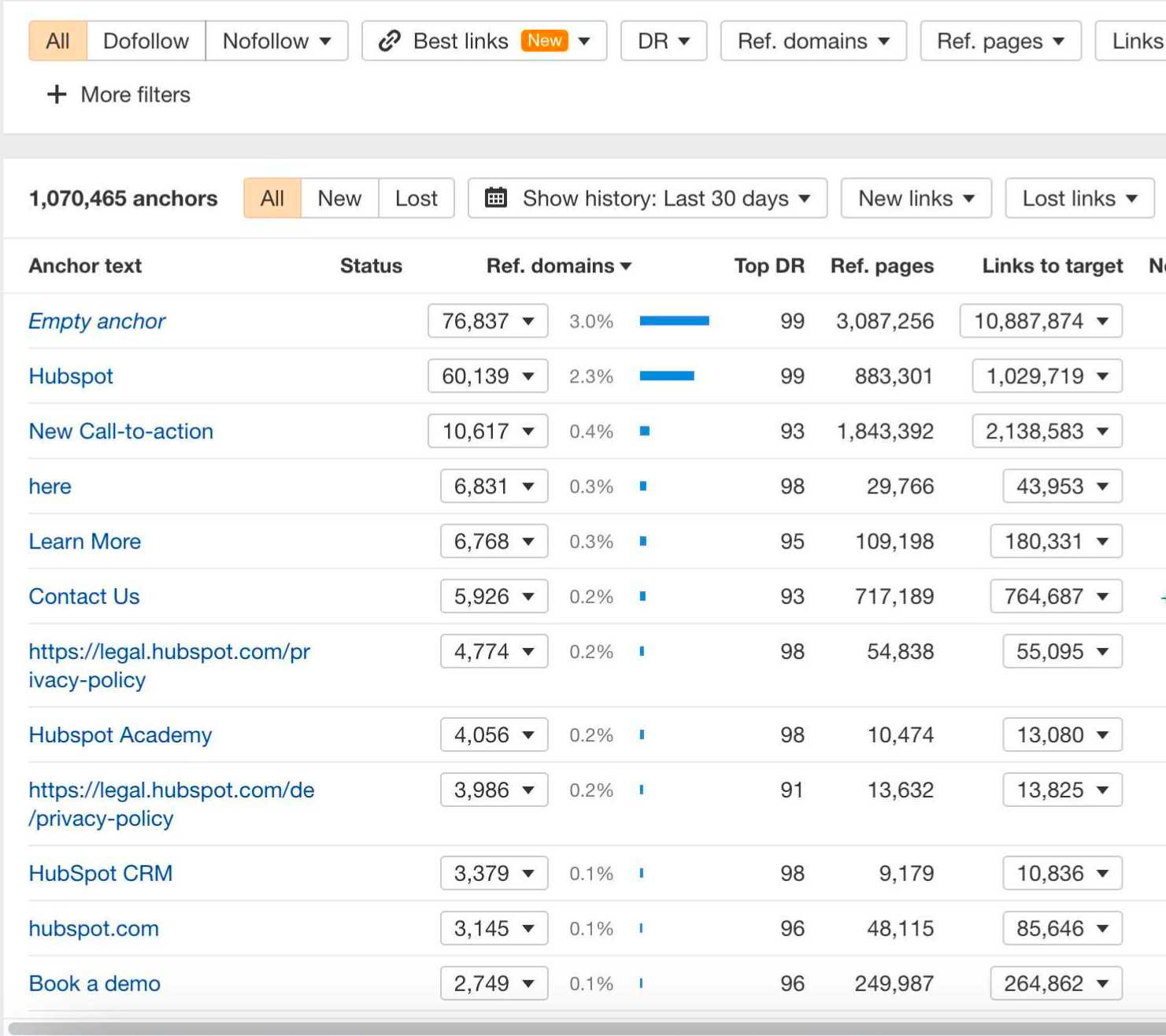
Backlinks are the foundation of great SEO performance and as we’ve established many times, one of the key ranking factors in search engine results. Companies that want to improve their rankings and get a solid ROI from SEO invest heavily in link building. But instead of looking at links in isolation, you should also consider your backlink profile.
We’re about to show you what a backlink profile is and why it matters, what it includes, and where you can find it for your website.
What is a backlink profile?
A backlink profile is a collection of all the backlinks pointing to your website. When other websites link out to yours, this link along with all of its attributes becomes a part of your backlink profile.
As your website grows and you get more backlinks from different referring domains, your backlink profile keeps changing. Keeping an eye on who links to you and in which way makes a great impact not just on your link building strategy, but also your SEO efforts.

Backlink profile in Ahrefs
A backlink profile is important because it’s one of the key signals search engines such as Google consider when ranking pages in search results.
What to pay attention to in your backlink profile
There are some free and paid tools that will show you what your backlink profile looks like. But if you don’t know what to watch out for, it will not be of much use to you. Here is exactly what to assess in your backlink profile.
The number of backlinks
Generally speaking, websites with a higher number of backlinks tend to perform better in search engine results. This is one of the most important metrics for a strong backlink profile. It means that a website has been around for long enough and that it’s a trusted resource in its industry and niche.

However, be extremely careful with this metric. Besides a high number of backlinks, make sure those are high-quality backlinks from websites with a high domain authority.
In other words, quality is more important than quantity. A website with 1,000 high-quality links is going to perform better than one with 50,000 spammy links from PBNs and link farms.
The number of links is merely a starting point and it’s not a tell-tell sign that a website is going to have great search engine rankings. This is why it’s necessary to look into other factors.
The relevance
There are many ways that links can be considered low-quality links and most importantly, this refers to relevance. The websites you get links from should be discussing your industry and niche in order for your link building efforts to be fruitful.
Consider the following example: website A is about gardening and has 5,000 links from gardening news and websites. Website B is also about gardening, with 20,000 links, but most of them from business and tech websites. Which website has the better backlink profile?
The first one, because the total number of backlinks is irrelevant if it’s coming from websites that are not suited for your target audience. The best way to get link equity and perform better in search engine results pages is to aim to get the types of links closely related to your industry and niche.
The anchor text
Anchor text is the text someone uses when they link out to you. According to reputable sources such as Search Engine Journal, this is a ranking factor in the sense that search engines use it to understand what the link is about.

Anchor text feature in Ahrefs
When doing a typical backlink analysis (with a tool such as Ahrefs), you’ll be able to see your anchor text breakdown. These are the words that other websites use when they link out to you and this breakdown should look natural.
This means an even distribution of your brand name, and most important target anchors you use. Also, the anchor text should be varied so that it appears natural. For example, for a page on business phones, you’ll need to have a good number of variations, such as:
- Business phone services
- Business phone systems
- Business phone
- Phone systems for business
- And similar
This helps search engines understand that the links are natural and not a part of a link building scheme. Those search engines then are more likely to rank you in SERPs for these specific keywords.
The quality of links
Every individual link you get to your website is going to have a set of attributes:
- The domain rating or domain authority of the website
- The age of the website
- The organic traffic coming to that website
- Whether it’s nofollow or dofollow
- The spam score of the website that linked to you
- And many other characteristics
As we explained before, focusing on numbers alone is not a way to rank higher in search engine results. If you continue building backlinks that come from high-authority websites, the effects compound over time and you’ll be able to perform better in search engine results.
The variety of backlinks
As any digital marketing expert knows, there is no website that has 100% high quality backlinks from great websites. And in reality, such a website would be quickly punished by Google’s algorithm.

The reason is simple – the ideal backlink profile looks natural. That means a good mix of high and low domain rating websites linking to you, a variety of anchor texts, some dofollow and some nofollow links and so on.
As you start writing quality content, websites will naturally link out to you. Some of your links will be paid, others will come from sources such as guest posting and link exchanges. Having a good mix of that means that your backlink profile is natural.
In other words, if you only have high authority websites linking to you with specific anchor text, this is a signal to search engines that you’re trying to game the system.
Where to find your backlink profile
Finding your link profile with all the information in one place can be very difficult. First, there is the dynamic nature of the Internet, with countless websites linking to each other every minute. Second, most SEO tools are powerful, but still limited in the volume of information they have.
Having said that, these are the places to start looking when you want to assess your backlink profile.
Google Search Console: this completely free tool will show you the number of backlinks and the places they come from
Ahrefs: powerful SEO tool that updates frequently and has a great backlink checker with data such as domain rating, website’s organic traffic, anchor text they used for the link and more
SEMRush: a similar tool to Ahrefs with a great backlink checker to asses inbound links
Majestic SEO: simple and easy to use link building tool and backlink checker
The main difference between Google Search Console and the remaining three tools is that you can only set up GSC for your own website. In other words, Ahrefs, SEMRush and Majestic SEO let you assess competitors’ backlinks too and learn from their backlink strategy.
What to do if you’re not happy with your backlink profile
After a thorough analysis, you can determine that some of the websites that link to you do more harm than good. If you built these links before (or someone did this for you), you can simply ask the editors to remove the link from their webpage.
If backlink analysis tools show spammy links with a low authority score, you can take action yourself. Within your Google Search Console, find the disavow tool and enter the backlinks that you want to remove.
After a certain time period, Google will start ignoring these links and remove them from your backlink profile
Take the next step
Once you have an overview of your backlink profile, you’ll want to do a backlink analysis. This shows you which bloggers link to you, what your most linked pages are and how all these links affect your search engine optimization efforts. Based on the results of your analysis, you’ll know what links you need more of to perform better in search engine results.
And if you’re feeling stuck – we have your back. At ReportCard, we build backlinks for a variety of companies, from small businesses to enterprise ones dealing with markets around the world.
Get in touch today so we can create a link building strategy that brings solid ROI.



